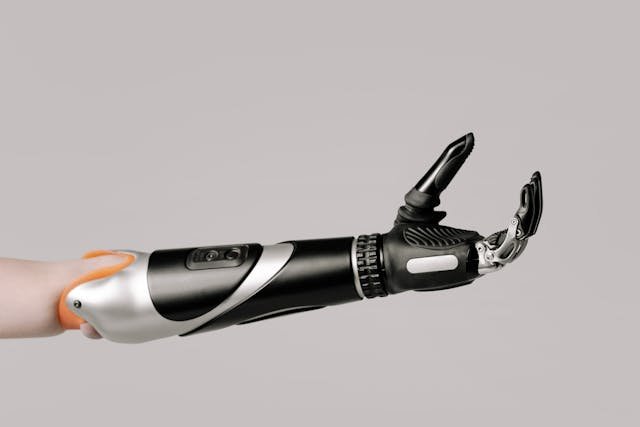For children who need prosthetic limbs, finding the right fit can be a challenge. Traditional prosthetics are expensive, take weeks to produce, and often require multiple adjustments. As children grow, they outgrow their prosthetic limbs quickly, making frequent replacements necessary. This can be financially and emotionally overwhelming for families.
3D printing is changing that. This revolutionary technology is making prosthetic limbs more affordable, faster to produce, and highly customizable. Kids can now have lightweight, comfortable, and even colorful prosthetic limbs that fit their personalities and needs.
In this article, we’ll explore how 3D printing is transforming prosthetic care for children, making high-quality limbs more accessible than ever before.
The Cost Barrier in Traditional Prosthetics
Traditional prosthetic limbs are built using complex manufacturing processes, often involving custom molds, high-end materials, and specialized labor. Each prosthetic is designed to fit the child’s unique limb structure, which adds to the cost.
Why Traditional Prosthetics Are Expensive
On average, a high-quality pediatric prosthetic limb can cost several lakhs, depending on the type and technology used. Bionic and myoelectric prosthetics, which use sensors and motors for better movement, are even more expensive. Many families struggle to afford these devices, especially since children outgrow them quickly.
In addition to the cost of the prosthetic itself, there are fitting sessions, adjustments, and maintenance costs. Frequent replacements make it even more difficult for families to keep up with expenses. This is where 3D printing offers a game-changing solution.
The Challenge of Frequent Replacements
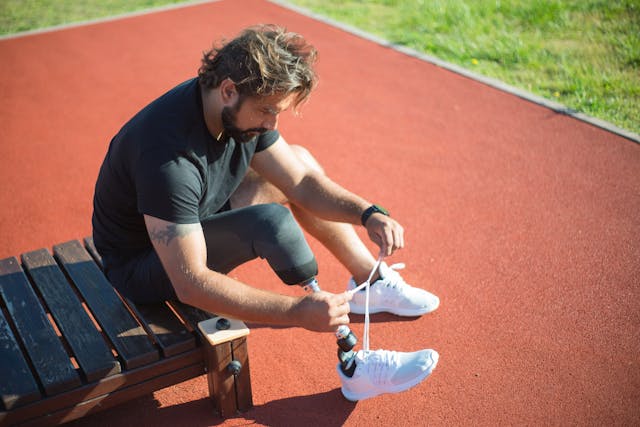
Unlike adults, children grow rapidly, meaning they need new prosthetics every few years. A limb that fits perfectly today may become too small in a matter of months. This constant need for replacement makes it hard for families to keep up, both financially and logistically.
Traditional prosthetic replacements take weeks or months to manufacture. This delay can leave children without a functional limb, limiting their ability to play, learn, and move freely.
3D printing offers a faster, more cost-effective alternative. With the ability to print a prosthetic in just a few days, children no longer have to wait for weeks to get a new limb.
The Limited Availability of Pediatric Prosthetic Specialists
Not every region has access to highly skilled prosthetists who can create custom limbs for children. Many families must travel long distances to get proper fittings and adjustments. This adds another layer of difficulty in accessing the right prosthetic care.
With 3D printing, prosthetic designs can be created digitally and printed anywhere, reducing the need for extensive travel. More clinics and hospitals can now provide prosthetics locally, making the process much more accessible for families in remote areas.
How 3D Printing Is Revolutionizing Pediatric Prosthetics
One of the biggest advantages of 3D printing is its affordability. Traditional prosthetics require expensive materials and labor, but 3D-printed prosthetics use lightweight, low-cost materials like biodegradable plastics and composite resins.
Lowering the Cost of Prosthetic Limbs
A traditional prosthetic can cost anywhere from ₹1 lakh to ₹10 lakh, but a 3D-printed limb can cost as little as ₹10,000 to ₹50,000, depending on the design and technology used. This massive price reduction makes prosthetic care more accessible to children from all backgrounds.
With lower production costs, charities, non-profits, and government programs can now provide more children with prosthetics, ensuring that no child is left without the mobility they need.
Faster Production and Delivery
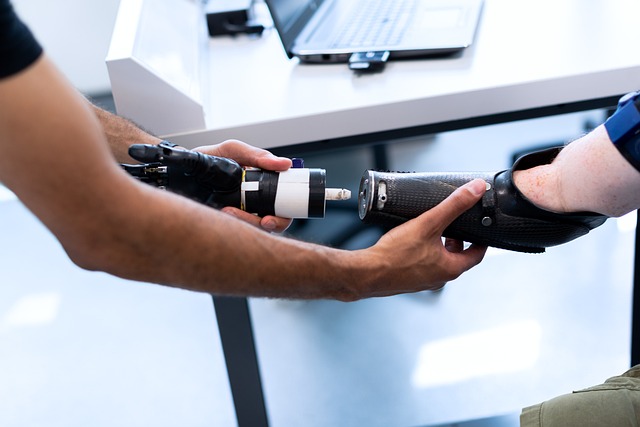
3D printing allows prosthetic limbs to be produced within days instead of weeks. Once a child’s measurements are taken, the design is created digitally and printed immediately.
This speed is crucial for children who need an immediate replacement due to growth spurts or damage. Instead of waiting for months, they can receive a new limb quickly, allowing them to continue their activities without interruption.
Additionally, emergency replacements are much easier with 3D printing. If a child breaks their prosthetic, a replacement part can be printed in hours, rather than requiring a full manufacturing process.
Customization to Match Each Child’s Needs
No two children are the same, and their prosthetics shouldn’t be either. With 3D printing, prosthetic limbs can be fully customized to match a child’s size, shape, and activity level.
Kids can also choose their own colors, designs, and patterns, making their prosthetic limb feel more like an extension of their personality rather than a medical device. This boosts confidence and encourages them to wear their prosthetic proudly.
For children who play sports or have specific hobbies, specialized prosthetics can be designed to enhance their abilities. Whether it’s a running blade, a swimming limb, or a grip-enhancing prosthetic for playing musical instruments, 3D printing makes customization easy and affordable.
The Impact of 3D Printing on Accessibility
Many children in rural areas lack access to high-quality prosthetic care due to limited medical facilities and specialists. Traditional prosthetics require advanced manufacturing centers, which are often only available in large cities.
Bringing Prosthetic Care to Rural and Underserved Areas
With 3D printing, prosthetic limbs can now be produced locally at hospitals, community centers, or even schools. Mobile 3D-printing labs are also being developed, allowing prosthetists to visit remote areas and provide on-the-spot prosthetic solutions.
This innovation means that children who previously had no access to prosthetic care can now receive affordable, high-quality limbs without having to travel long distances.
Making Prosthetics More Widely Available for Kids in Need
Globally, millions of children need prosthetic limbs but cannot afford them. Organizations using 3D printing are working to donate and distribute free prosthetic limbs to children in need.
Non-profit initiatives such as Limbitless Solutions and e-NABLE have already provided thousands of children with 3D-printed prosthetic arms. More organizations in India are now adopting this model to increase access to prosthetic care for underprivileged children.
By reducing manufacturing costs and increasing production speed, 3D printing is ensuring that more children can receive the mobility solutions they need, regardless of their financial situation.
Encouraging Innovation in Pediatric Prosthetic Design
3D printing is constantly evolving, allowing designers to experiment with new shapes, materials, and functions. Future prosthetic limbs could be lighter, more durable, and even capable of sensing touch.
As research continues, we may see bionic 3D-printed prosthetics that respond to muscle signals in real-time, allowing children to control their limbs with greater precision and ease.
The ability to test and improve designs quickly means that children today—and in the future—will have access to better, more advanced prosthetics than ever before.
Future Advancements in 3D-Printed Prosthetics for Kids

The next big step in 3D-printed prosthetics is the integration of artificial intelligence (AI). Future prosthetic limbs will be equipped with AI-powered sensors that can learn a child’s movement patterns and adjust accordingly.
Smarter Prosthetics with AI Integration
For example, bionic arms with AI can recognize muscle signals and allow children to control their prosthetic fingers with greater precision. Over time, the prosthetic “learns” how the child moves, making motions smoother and more natural.
This advancement will be especially beneficial for children who require fine motor control, such as those who want to play musical instruments, write, or engage in detailed hand movements. AI will make 3D-printed prosthetics not only affordable and accessible but also highly intuitive and user-friendly.
Biodegradable and Sustainable Materials
Currently, most 3D-printed prosthetics are made using lightweight plastics and carbon fiber composites. However, researchers are developing biodegradable and eco-friendly materials to make prosthetic limbs more sustainable.
In the future, prosthetics may be made from plant-based resins, recycled plastics, or even bioengineered materials that decompose safely after use. This would make the production process less harmful to the environment while still ensuring durability and strength.
Using sustainable materials could also lower costs even further, making prosthetic care accessible to more children worldwide.
Sensory Feedback and Touch Sensation
One of the biggest challenges in prosthetic technology is restoring the sense of touch. Future 3D-printed prosthetics may include haptic feedback systems that allow children to feel textures, temperature, and pressure.
Scientists are developing electronic skin (e-skin)—a flexible material embedded with sensors that can send signals to the nervous system. This could help children feel more connected to their prosthetic limb, making everyday tasks like grabbing objects, playing sports, or interacting with their environment much more natural.
As this technology advances, children with prosthetic limbs may soon be able to experience a level of sensation that was once thought impossible.
How Families Can Access 3D-Printed Prosthetics
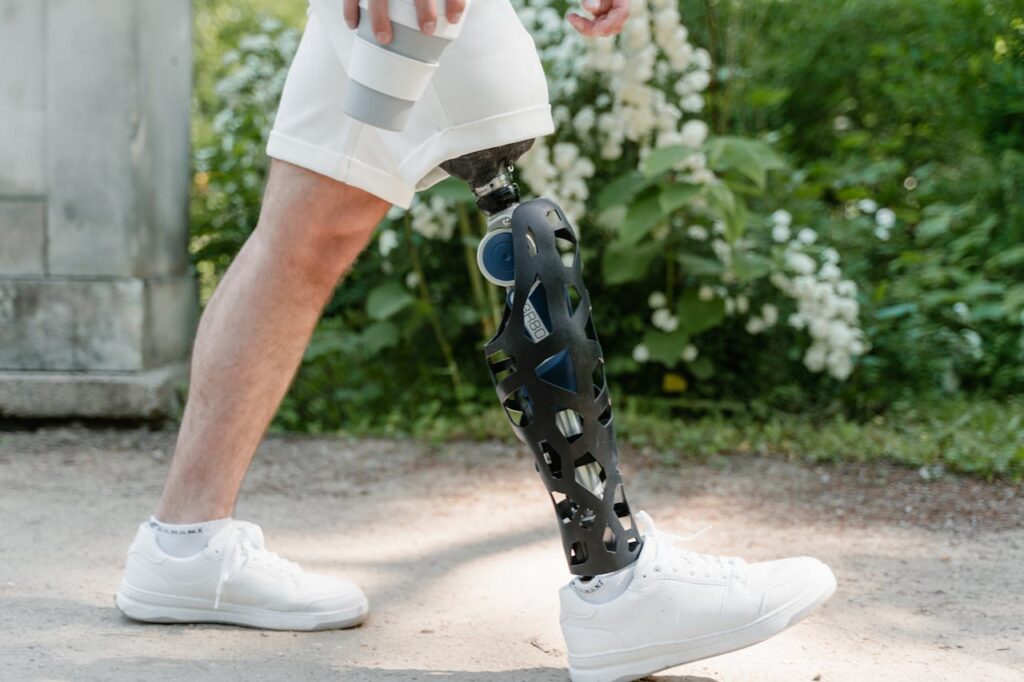
With 3D-printed prosthetics becoming more common, many clinics and hospitals are adopting this technology. Parents should look for prosthetic centers that specialize in 3D-printed solutions to ensure their child receives the best possible fit.
Finding the Right Prosthetic Provider
At Robobionics, we provide affordable, lightweight, and customized 3D-printed prosthetic limbs designed specifically for children. Our experts work closely with families to ensure a perfect fit, considering the child’s growth, activity level, and personal preferences.
Applying for Financial Assistance and Grants
Although 3D-printed prosthetics are more affordable than traditional ones, they can still be a financial challenge for some families. Luckily, many non-profit organizations, government programs, and CSR initiatives offer financial aid for pediatric prosthetics.
Parents can explore options such as:
- The ADIP Scheme (India’s Assistance to Disabled Persons Program), which provides funding for prosthetics.
- Non-profit organizations like Jaipur Foot and Limbitless Solutions, which donate 3D-printed prosthetics to children in need.
- Crowdfunding platforms like Milaap and Ketto, where families can raise funds for their child’s prosthetic limb.
By researching these options and connecting with prosthetic experts, families can find the best solution without facing overwhelming costs.
Preparing Your Child for a New Prosthetic
Transitioning to a new prosthetic limb—especially a 3D-printed one—requires adjustment and practice. Parents can help their child by:
- Encouraging daily use in a comfortable setting, such as at home.
- Incorporating fun activities like drawing, playing games, or light sports to help them adapt.
- Scheduling regular check-ups to ensure the prosthetic fits properly and making necessary adjustments as the child grows.
The good news is that 3D-printed prosthetics are lightweight, easy to wear, and customizable, making the transition smoother and more enjoyable for children.
Real-Life Success Stories of Kids Using 3D-Printed Prosthetics
One of the most inspiring aspects of 3D-printed prosthetics is how they restore confidence in children. Many kids who were once hesitant about using a prosthetic limb have embraced it after receiving a custom, colorful, and comfortable 3D-printed version.
Children Regaining Confidence Through Custom Prosthetics
For example, a young boy in India who was born without a hand received a 3D-printed superhero-themed prosthetic arm. Instead of feeling self-conscious, he now proudly shows off his limb, feeling like a real-life superhero. This highlights how personalization can make prosthetics not just functional but fun and empowering.
Another child, a young girl who lost her leg due to an accident, was able to run again with a lightweight 3D-printed running blade. Unlike traditional prosthetics that took months to create, her running blade was produced in just a few days, allowing her to return to her favorite sport without long delays.
These stories demonstrate that 3D-printed prosthetics do more than just restore movement—they give children a sense of pride, joy, and excitement about using their new limb.
Expanding Opportunities for Kids in Rural and Underserved Areas

Before 3D printing, children in remote villages and underserved communities often had little to no access to prosthetic care. Traditional prosthetics were too expensive, and the lack of specialized clinics made it difficult for families to get proper fittings.
Today, organizations are using mobile 3D-printing labs to bring prosthetic solutions directly to these communities. In one case, a young girl from a remote village in India received her first prosthetic arm through a traveling 3D-printing initiative. Instead of waiting months for a limb, she received a fully functional prosthetic within a week, allowing her to write, play, and do everyday tasks independently.
By bringing prosthetic production closer to those who need it, 3D printing is bridging the gap between technology and accessibility, ensuring that every child—regardless of location—has the chance to live a more independent and active life.
Breaking Stereotypes and Inspiring the Next Generation
Many children with limb differences struggle with social acceptance. They often feel different from their peers, which can impact their confidence and willingness to participate in activities. However, 3D-printed prosthetics are changing the conversation around disability.
In several schools, children who use custom-designed prosthetics have become sources of inspiration for their classmates. Some kids proudly wear robotic-style arms or glow-in-the-dark designs, turning what was once seen as a “medical device” into something cool and futuristic.
As more children embrace these advanced prosthetic limbs, they are helping to break down social barriers and reduce stigma, proving that prosthetics are not a limitation—but a tool for empowerment.
The Role of Robotics in 3D-Printed Prosthetics
One of the most exciting developments in prosthetic technology is the combination of 3D printing with robotics. Researchers are now designing bionic limbs with 3D-printed components, making advanced prosthetics more affordable and widely available.
Combining 3D Printing with Bionic Technology
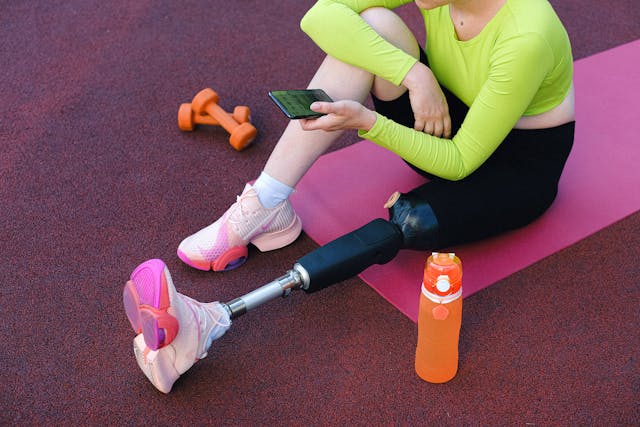
Unlike traditional robotic limbs that are extremely expensive, 3D-printed bionic hands and arms use cost-effective materials while still offering advanced motion control and grip strength. These limbs allow children to move their fingers, grasp objects, and even control their hand movements through muscle signals.
For example, myoelectric prosthetics, which detect electrical signals from muscles, are now being integrated into 3D-printed designs, allowing for better control and natural movement.
Smart Prosthetics with AI and Machine Learning
Artificial intelligence (AI) is playing a key role in the future of 3D-printed prosthetics. Smart prosthetic limbs are now being developed with AI-powered sensors that learn and adapt to a child’s movement patterns.
For instance, if a child frequently grips a pencil or plays a musical instrument, the AI inside the prosthetic will adjust to provide smoother, more natural control over time. This makes daily tasks easier and more intuitive, reducing the need for manual adjustments.
As technology advances, we may soon see fully automated prosthetic limbs that can adjust in real time to different activities, allowing kids to move seamlessly between walking, running, and fine motor tasks.
3D-Printed Exoskeletons for Children with Mobility Challenges
Beyond limb prosthetics, 3D printing is also being used to create wearable robotic exoskeletons. These devices help children with limited mobility or muscle weakness by providing extra support and movement assistance.
For children with conditions like cerebral palsy or muscular dystrophy, 3D-printed exoskeletons can improve mobility and reduce strain, allowing them to walk or move more comfortably. These innovations are opening new possibilities for children who previously had limited movement, giving them the chance to explore the world with greater freedom and independence.
How Schools and Communities Can Support Kids with 3D-Printed Prosthetics
Schools play a major role in helping children with prosthetics feel included and supported. Teachers and classmates can make a difference by creating a positive and understanding environment where kids feel comfortable using their prosthetic limbs.
Creating Inclusive Classrooms for Children with Prosthetic Limbs

One way schools can support these children is by educating classmates about prosthetics in a simple and friendly way. When kids understand how prosthetic limbs work, they become more accepting and inclusive, reducing curiosity-driven questions that may make a child feel self-conscious.
Additionally, schools can work with adaptive sports programs to ensure children with prosthetic limbs have equal opportunities to participate in physical activities. Whether it’s modifying playground equipment or introducing adaptive sports like wheelchair basketball or running blade competitions, inclusivity makes a huge difference in a child’s confidence.
Encouraging Peer Support and Social Inclusion
Friendship and peer support are essential for building confidence in children with prosthetics. Schools and communities can encourage buddy programs where students with and without prosthetic limbs engage in activities together.
Organizing team-building exercises, art projects, and group sports helps children with prosthetics feel fully included in their school environment. This not only boosts confidence but also helps create a more compassionate and supportive community.
Raising Awareness and Expanding Access to 3D-Printed Prosthetics
As 3D-printed prosthetics continue to grow in popularity, raising awareness and expanding access is essential. Schools, hospitals, and community centers can collaborate with prosthetic manufacturers, non-profits, and government programs to ensure that every child who needs a prosthetic has access to one.
Hosting workshops, donation drives, and awareness campaigns can help spread information about the benefits of 3D-printed prosthetics and encourage more investment in this life-changing technology.
Final Thoughts: The Future of 3D-Printed Prosthetics for Kids
3D printing is transforming the world of pediatric prosthetic care, making high-quality limbs more affordable, faster to produce, and fully customizable. This technology is removing financial and geographic barriers, ensuring that every child—regardless of their background—can have access to a comfortable, functional prosthetic limb.
At Robobionics, we are at the forefront of these innovations, creating lightweight, durable, and personalized prosthetic solutions using the latest advancements in 3D printing technology. If you’re looking for an affordable and customized prosthetic for your child, contact us today. Let’s build a future where no child has to wait for the mobility they deserve.



